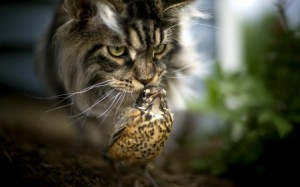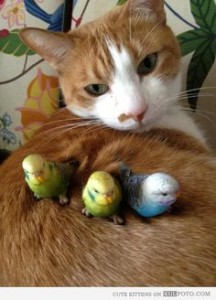One significant aspect of Christina Rossetti’s “Goblin Market” that sets it apart from other Victorian poems we have read so far is its portrayal of a functional relationship between two women. “The Blessed Damozel,” “The Lady of Shalott,” “My Last Duchess,” and “In an Artist’s Studio” have all explicitly stated the genders of the two main participants in the action of the poems; invariably, they have featured a man and a woman. In most of these poems, with the possible exception of “In an Artist’s Studio,” the man and woman are involved in a heterosexual romantic relationship. In contrast, “Goblin Market” portrays two sisters living and working together in harmony.
While the relationship between Laura and Lizzie is established as sisterly, there are several instances during the poem in which Rossetti hints at a deeper connection between the two women. For example, early on in the poem, Laura and Lizzie “[crouch] close together… / With clasping arms and cautioning lips / With tingling cheeks and finger tips.” Later, as the sisters fall asleep, the poem describes them as “Cheek to cheek and breast to breast / Locked together in one nest.” This language redefines the relationship between the sisters as something more romantic and intimate.
Perhaps the most convincing indication of the sisters’ relationship as romantic partners is seen in the final stanza of the poem. While the lines “when both were wives / With children of their own” seem to indicate a very traditional ending to the poem in which both women marry into separate families, the conspicuous lack of any mention of their husbands can suggest another conclusion. Instead, it can be interpreted that the women act as wives to each other, forming an unconventional family unit between themselves and their children. This reimagined family, while atypical for the Victorian era, reflects an arguably stronger and more successful romantic relationship than the other poems we have read so far. Instead of the unequal power dynamic seen in “My Last Duchess” and “In an Artist’s Studio,” or the yearned-for but unrealistic relationships of “The Lady of Shalott” and “The Blessed Damozel,” Laura and Lizzie are a functional couple, living and raising children in mutual admiration and respect.






